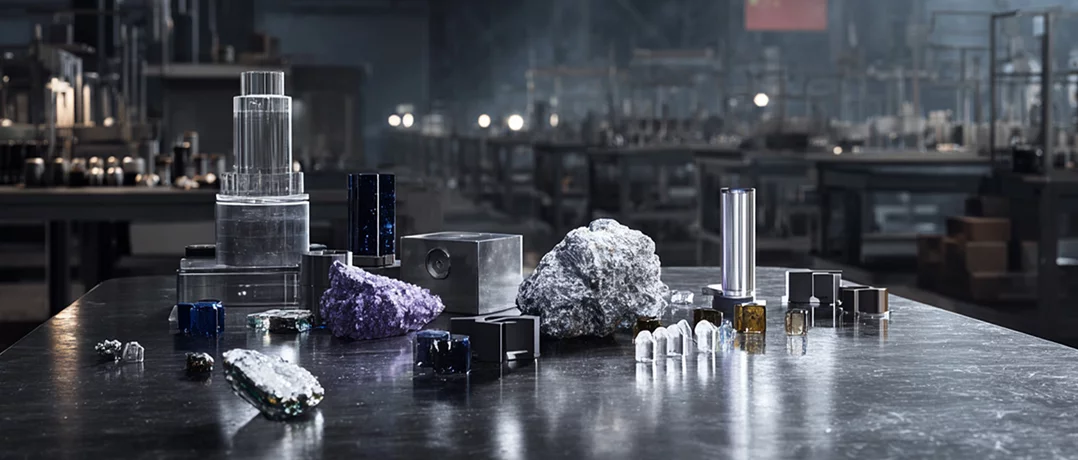Rare Earth Elements are vital to modern tech, with China dominating their supply, sparking Western efforts to reduce dependence.
How have rare earth elements become the backbone of modern technology?
How have rare earth elements become the backbone of modern technology?


Customers often search for the end result, not the process and the “magic” behind the scenes. When individuals go to purchase mobile phones or electric vehicles, for instance, they tend to neglect the chips and elements that contribute to the final desired product.
However, beneath the shiny and appealing devices lie tiny elements that represent the essential foundations of everything that comes into contact with today’s world, they are called Rare Earth Elements (REEs).
What are REEs and their significance in modern technology?
Rare Earth Elements are a group of 17 metallic elements essential to modern technologies. Despite their name, they are not particularly rare in the Earth’s crust, but difficult to isolate and highly hazardous to extract, hence the term “rare earth.”
REEs play a crucial role in manufacturing electronics (smartphones, laptops), renewable energy systems (magnets for wind turbines and electric vehicles), and defense technologies (guidance systems, lasers, and radar systems). They are tiny and matt materials that pull the strings of power in the modern technological world.
These elements possess significant magnetic, luminescent, and electrochemical properties, which make them indispensable in miniaturized, high-performance devices. Among the 17, two REEs stand out: Dysprosium (Dy) and Neodymium (Nd). They are the strongest commercial magnets since they enable the creation of extremely strong permanent magnets. The two are used in electric vehicle (EV) motors, wind turbine generators, hard disk drivers as well as headphones and speakers. Other elements, such as Europium (Eu), Terbium (Tb), Yttrium (Y), are used for luminescent purposes such as in LED lights, display screens (TVs, smartphones, tablets) and medical imaging devices (MRIs, CT scans).
China’s hegemonic control over the REE supply chain
REEs are not all confined in one specific country or area. However, the issue lies in the processing stage particularly.
Today, China holds a near-monopoly over the global rare earth supply chain. According to the International Energy Agency (IEA), the country accounts for roughly 61% of global REE production and 92% of processing capacity, underscoring its strategic leverage in the high-tech economy.
This dominance was not out of coincidence, but rather caused by two key advantages that China possesses. The first is the presence of massive reserves of REEs within its territory. The second is a consistent long-term policy which began in the 1980s that encompasses low labor costs and less stringent environmental regulations (compared to other Western countries, namely the Europeans).
Beijing’s political and technological leverage with regards to REEs
With the near-monopoly that China possesses when it comes to REEs, Beijing has been keen to capitalize on this strategic advantage.
To this extent, it has resorted to export controls as a political card to pressure adversaries to comply with its demands and concerns. For instance, in 2010, a dispute over Japan’s detention of a Chinese fishing trawler captain, the Chinese government placed a trade embargo on all exports to Japan of REEs used in products.
China’s latest export controls, however, have much deeper repercussions and extend well beyond reciprocal tariffs that has emerged with is staunch rival, the United States. Under the new rules, foreign companies must obtain government approval to export any products that contain Chinese-sourced rare-earth minerals or that use Chinese extraction, refining, or magnet-making technologies. Beijing insists the measure aims to “safeguard national security and prevent misuse of rare-earth materials in military and sensitive sectors.” Given its dominant position in the global REE supply chain, China effectively holds the ability to dictate which companies and countries can access these vital materials. The move delivers a strategic blow to Washington, which remains heavily dependent on Chinese rare earths and lacks the infrastructure to process heavy REEs independently.
China’s decision is poised to reshape supply chains and intensify competition not only in critical minerals but in Artificial Intelligence (AI) and advanced technologies as well (due to their reliance of these elements, chips and semiconductors). Such power would ultimately allow Beijing to control the pace of modern technology’s evolution. For Beijing, the move signals a clear message: in an era of geopolitical decoupling, control over resources means control over leverage.
Western attempts to Curb Chinese monopoly in REEs
As for the U.S. and its allies, it highlights the urgent need to diversify rare earth sourcing and invest in domestic refining capacity, a challenge that could take years to overcome given their dependency on Chinese supplies (especially in the case of the European Union). Therefore, these countries, spearheaded by Washington, have been keen on breaking Chinese monopoly, at least since 2024. Accordingly, the US Department of War seeks to complete a full domestic production chain before 2027, while the EU passed the Critical Raw Materials Act which aims to ensure a sustainable and secure supply of essential raw materials in the EU as well as reducing dependency on imports (namely from China).
From here, will Beijing continue to dominate REEs’ processing and production, or will Western countries ramp up their efforts to curb the Middle Kingdom’s hegemony?


